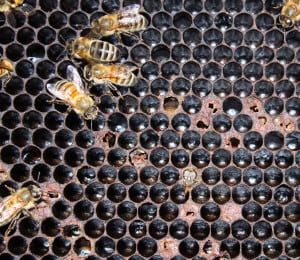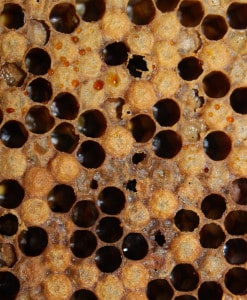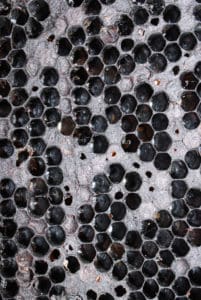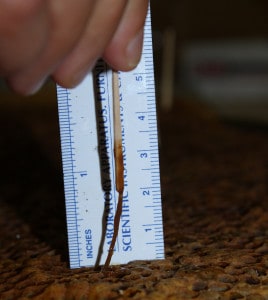
Three summers ago I was hired as a Pennsylvania Apiary Inspector. When I started this job I thought back to my mentor Dr. Robert Berthold. He taught us bee diseases and pest by showing slides and using key descriptive words. This inspired me to start photographing various diseases and pest found inside and outside of the hive. Over the next few weeks I will share my experience with some of these diseases and pest. I chose American Foulbrood (AFB) first since it’s the most notable brood disease.
So I first thought to myself…How does AFB spread? America Foulbrood is introduced to the hive by drifting bees from nearby colonies, infected equipment/tools, beekeepers and robbing. The infection begins when spores are introduced to the hive. Nurse bees will feed larvae food contaminated with spores. Once spores are in the midgut the vegetative form of the bacterium takes over using the larvae as a source of nourishment. After the cells are sealed, death occurs. If death occurs while in the pupal stage, there will be a protruding tongue present. When there is a high infection you can notice moisture on cappings as they start to sink. Sunken capped cells are a result of larvae decomposing and sinking into the cell.

The first time I saw this disease it was unforgettable, I had gotten a call from a beekeeper concerned that he had this disease. I drove to the apiary with the suspect AFB hive. I noticed a strong odor walking into the apiary. The odor reminded me of rotting meat. I then Inspected 3 of the 4 hives leaving the AFB suspect last. The three prior to the last were clean. When I cracked the lid on the last hive I immediately smelled the same odor I noticed on the walk in. Upon further investigation I found “coffee” brown larvae that were melted down to the bottom of the cell. I also noted a “spotty” brood pattern along with sunken cappings with perforations in them. I then performed the “rope test” followed by the Holst milk test and confirmed this was American foulbrood. I then took samples into sterile containers to test for the Terramycin resistant AFB.
It turned out that the beekeeper was treating with Terramycin and the symptoms came back each year. This indicated the AFB strain was Terramycin resistant and lab test confirmed this theory. I recommended the beekeeper to burn the hive. I let him know about the treatment Tylan but warned him about the residuals of this chemical left behind in the hive since Pennsylvania does not have a burn policy on AFB. He had decided to burn the hive. It was a great experience but also a little disheartening knowing you have to inform the beekeeper of this notable disease.

